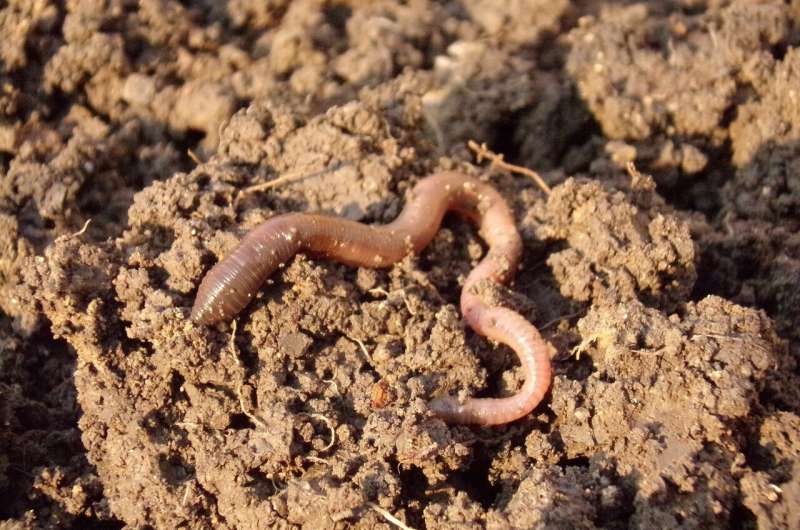Earthworm population triples with use of cover crops

Research from Cranfield University has found that using cover crops to protect soil and introduce organic matter increases earthworm numbers and provides financial savings for farmers.
The Ph.D. research investigated the impact of a cover crop mixture planted in a wheat-maize-lettuce rotation on lowland peat soils at a farm in Cambridgeshire between 2016 and 2019.
The earthworm population was three times greater after the cover crop compared to a treatment without any vegetation from cover crops. Reduced tillage and cultivation (ploughing and ground preparation) costs also meant savings for the farm involved in the trial.
"Earthworm populations can be negatively affected by soil tillage, so by reducing the depth and intensity of tillage we can promote their communities to aid soil structure, water infiltration and nutrient availability," said Dr. Tom Storr, who was supervised by Dr. Jacqueline Hannam and Dr. Rob Simmons in the Centre for Environment and Agricultural Informatics at Cranfield.
"The benefits of the cover crop were particularly notable when they were grown for a longer period," said Storr. "The continuous vegetation provided by the cover crop combined with reduced tillage, resulted in a huge increase of earthworms—a key indicator of soil quality."
The research also found that the frost sensitive cover crops improved nitrogen levels in the spring and increased soil microbial biomass.
In addition to the Ph.D. research, two MSc projects investigated the use of different cultivation techniques prior to lettuce planting. Both indicated that tillage could be performed at a shallower depth (12-15 centimetres) than normal (30 centimetres) without detriment to lettuce yield. This will aid soil quality and reduce fuel consumption associated with lettuce ground preparation.
The Ph.D., titled "The effect of cover crops on soil quality indicators in a cereal and salad rotation," used a mustard, oilseed radish and black oat cover crop mixture. Earthworm abundance and other soil quality indicators such as nitrogen and moisture levels were measured after the cover crop was planted between wheat and maize and then again between maize and lettuce.
Provided by Cranfield University


















